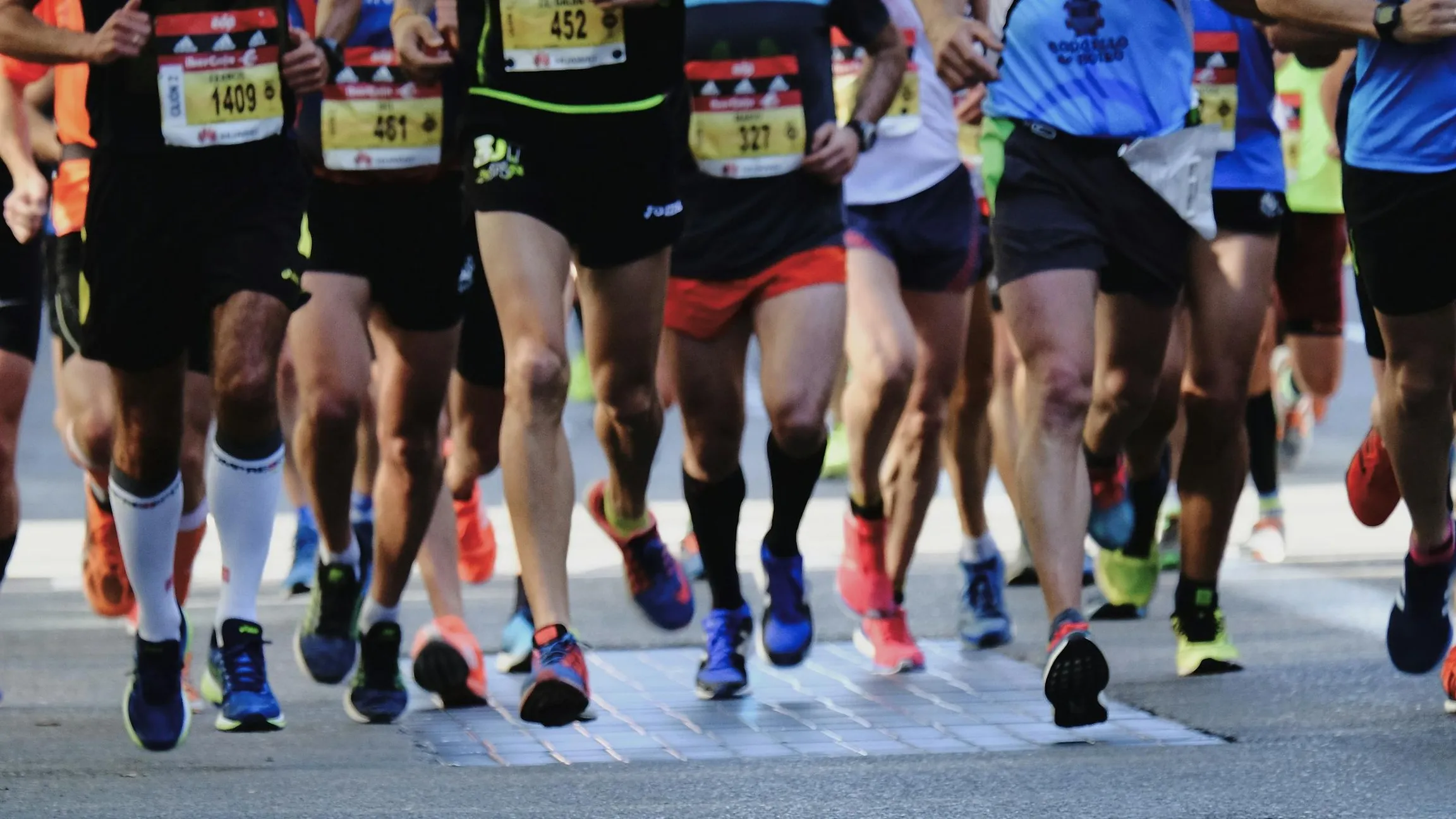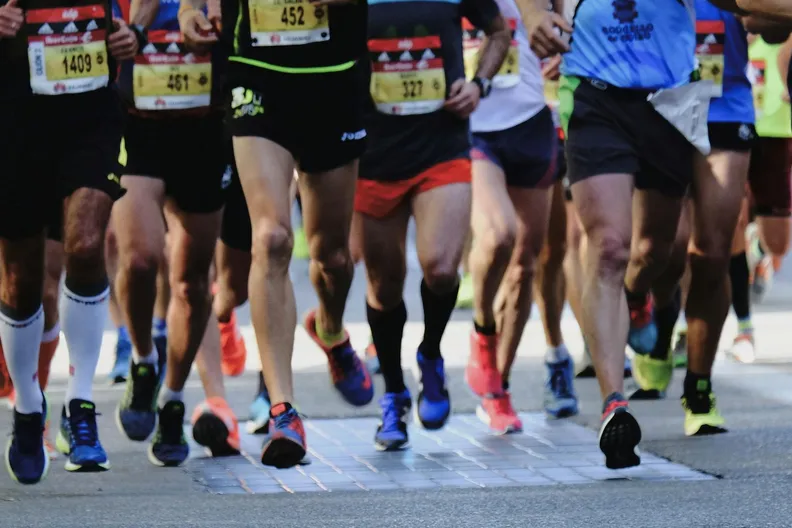Running is one of the easiest and most popular forms of sport that anyone can do, regardless of age or fitness level. It can be done on the road, on trails, or even on a treadmill. Most people start with short distances to increase their endurance, and then work their way up to longer distances and even marathons.
Benefits of Running
Running has many health benefits. It is a great cardiovascular workout that strengthens the lungs and heart and improves blood circulation. It can help boost the immune system by promoting the production of immune cells in the body. Regular running can also improve mood by supplying the brain with endorphins, which provide a sense of happiness and well-being.
Running is also an effective way to burn calories and lose or maintain weight. It increases metabolism and helps reduce excess body fat.
Tips for Beginners
If you are new to running, there are some tips that can help you get off to a good start. Here are some basic tips for beginners:
Invest in the right pair of running shoes:A good pair of running shoes can make the difference between a comfortable run and knee or ankle pain. Visit a retailer for advice on which pair is best for you.
Start slow: In the beginning, it's important to start slowly and gradually increase your endurance. Start with short distances and slowly increase the distance.
Find a running partner: Running can be lonely, but there are many running groups and partnerships you can find. This can motivate you and help you reach your goals.
Plane your route in advance: Plan your route in advance and choose a location that is suitable for your fitness level. Avoid running on busy roads and make sure the route is well lit.
Watch your nutrition: When you run regularly, your body needs extra nutrients and fluids. Therefore, always make sure you drink enough water and eat balanced meals.
Running can be a lifelong sport that offers you physical and mental health. However, start slowly and follow the tips for beginners to make sure you get the most out of your running experience.
Forms of running
For example, if you start with light jogging to lose weight, you are usually familiar with the most well-known discipline in running - the marathon, which is counted among the class of road races. In addition, however, there are also track and cross runs.
Cross running
We start with the cross runs, because the main season begins in the fall and extends to the spring. Cross runs are usually shorter than road runs, with distances between 5 and 15 kilometers, but they are much more strenuous and, above all, more demanding in terms of coordination.
In real cross running, you run exclusively off-road, i.e. on fields, meadows, etc. However, there are also variations in which at least the predominant part is run on unpaved roads. The majority of participants run these events with "spikes". Depending on the surface, spikes with nails of different lengths can be used. For example, after strong regem, nails longer than 1 cm provide the opportunity to run a high pace. At the same time, the long nails, in turn, slow down when the ground is hard. So if you want to participate in cross runs, you should get nails of different lengths and a suitable wrench in advance.
Note: There are different key patterns similar to cross and slot. This should be considered when buying, so that you do not experience a nasty surprise shortly before the start with a possible short-term change of nails.
Cross runs are wonderfully suitable in winter to train your own strength endurance and are therefore for many ambitious athletes an optimal preparation for the summer season.
Road running
As already mentioned at the beginning, road runs are among the most popular runs, not least because of the well-known marathons and half marathons. They require less strength and coordination work due to the mostly relatively flat routes and asphalt paths.
Road runs usually start with distances of about 5 kilometers and can be as long as 4989 kilometers - that's how far you have to run in the world's longest running event in New York:The Self-Transcendence 3100 Mile Race.
A well-known long race format that can be completed in one day is a 100-kilometer run. Such distances, which are longer than a classic marathon of 42.195 kilometers, are also called ultramarathons.
Much more popular, however, are half marathons. They have the optimal length for most runners, as these require less time in preparation than marathons and can therefore be scheduled much better into the workday. Another advantage of the events, which are about 21 kilometers long, is that you only need about 10 days to recover after the race, which means you can participate in more than one event. As a rule, by the way, they say that you should use about half of the distance in days for regeneration and not train hard.
Many road races also include other "crooked" distances. Here there are no rules that exclude a certain distance - but usually these events are scenically more beautiful, which results in the crooked route.
For those who are very ambitious, many organizers also offer routes officially measured by the German Athletics Association, which are thereby best list eligible. If you run a marathon as fast as no one before you on a route that is not officially measured, this is not recognized as a world record. In addition, certain criteria must be met. For example, the start and finish must not be far from each other, because only on a circuit - in theory - do you have the same amount of tailwind and headwind. In addition, the route from start to finish must not have a large gradient.
However, if you just want to have fun, there are hardly any rules for a running event that you should definitely know. Only the start number should be clearly visible on the front side of the body to see and fair play always be observed.
Note: Just at championships and generally important competitions, the start number must usually be worn with four safety pins in the chest area, while most runs are also allowed from triathlons known start number bands.
Plastic track or tartan track
While on the road mainly also popular sporting events such as the big marathons are held, it is on the plastic track usually about fast times and good placements in the context of track meetings and championships. While there are very many events of road races spread over the whole year, only relatively few races are offered by track meets, but this is probably also due to the smaller target group of very ambitious runners.
Timing
While electronic timing in the ground area is often used in road races, in a regular competition on the track the time is taken roughly "at chest level" according to the IAAF guidelines. In fact, the International Association of Athletics Federations (IAAF) specifies the torso as the body part to be measured at the finish line, which demonstrates the greatest fairness to other athletes. So it may well be at major championships and Olympic Games that a very long-legged runner has the foot as the first in the goal, but still only third provided that two other athletes with shorter legs with their torso run over the finish line earlier.
Note: In a small road race with a foot transponder, however, the athlete with the longer legs would have won in this case, even if this is not in accordance with IAAF regulations.
Distances
There is also a small difference between road and synthetic track in terms of distances and their naming. While on the road most runs only start from 5 kilometers in length, this is already the second longest distance in track racing. The longest distance officially run at championships is 10,000 meters over 25 stadium laps. Unlike in road racing, the distance is not measured in kilometers but in meters. This is followed in descending order by the 5,000 meters, which can also be called the long distance, followed by 3,000 meters of obstacles, 1,500 meters and the 800 meters. Below this, one is already quite clearly in the sprint area.
Track vs. road
Whoever wants to bring a good performance over the 2 stadium laps with 400 meters each, must usually specialize in this in training. This training requires a much higher percentage of tempo training and overall shorter runs compared to longer road races. If you do too long a run in training for an 800-meter race, this can be detrimental to a good time in the competition. On the other hand, many ambitious road runners often also use shorter track races, for example over 800 and 1,500 meters, as hard tempo training for a longer road race in the fall, while the track races take place mainly in late spring and summer.
Special case: indoor
Only indoor races in winter on a 200-meter synthetic track are a temporal exception. However, this special competition format is used almost exclusively by very ambitious athletes, as the number of possible competitions is also very limited due to a small number of track and field halls. For amateur athletes, therefore, usually only age group championships offer themselves in the hall.
Optimal training location
While competitions on the synthetic track for most runners remain rather an exception, but again most runners should also take advantage of a 400-meter track (or in winter a 200-meter track) for a good tempo training. So, even for good marathon training, it makes sense and is recommended to do tempo training once a week on the synthetic track. Three training sessions we present to you in the following article
.



